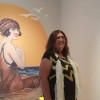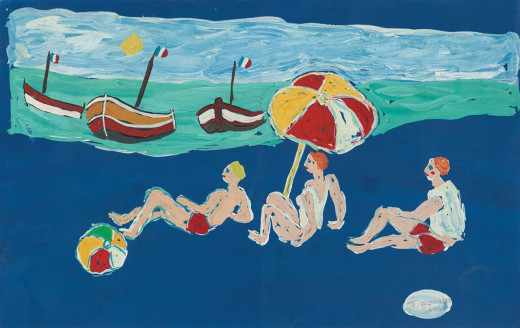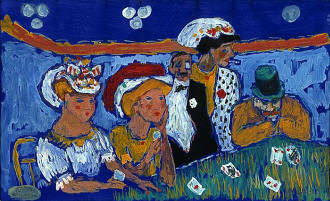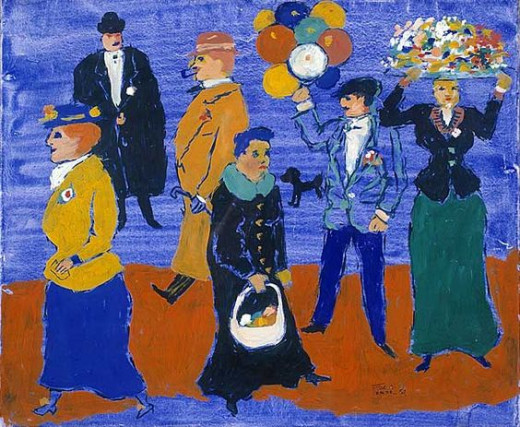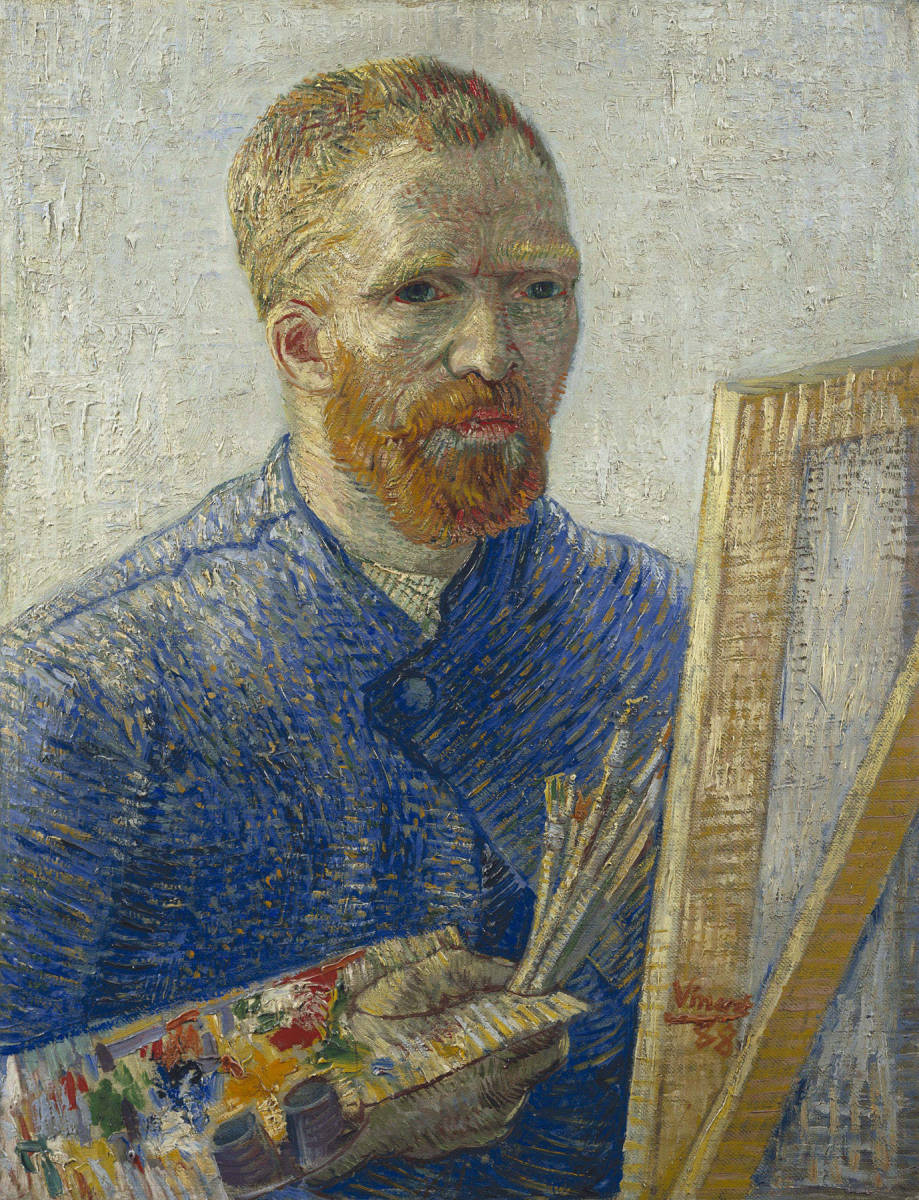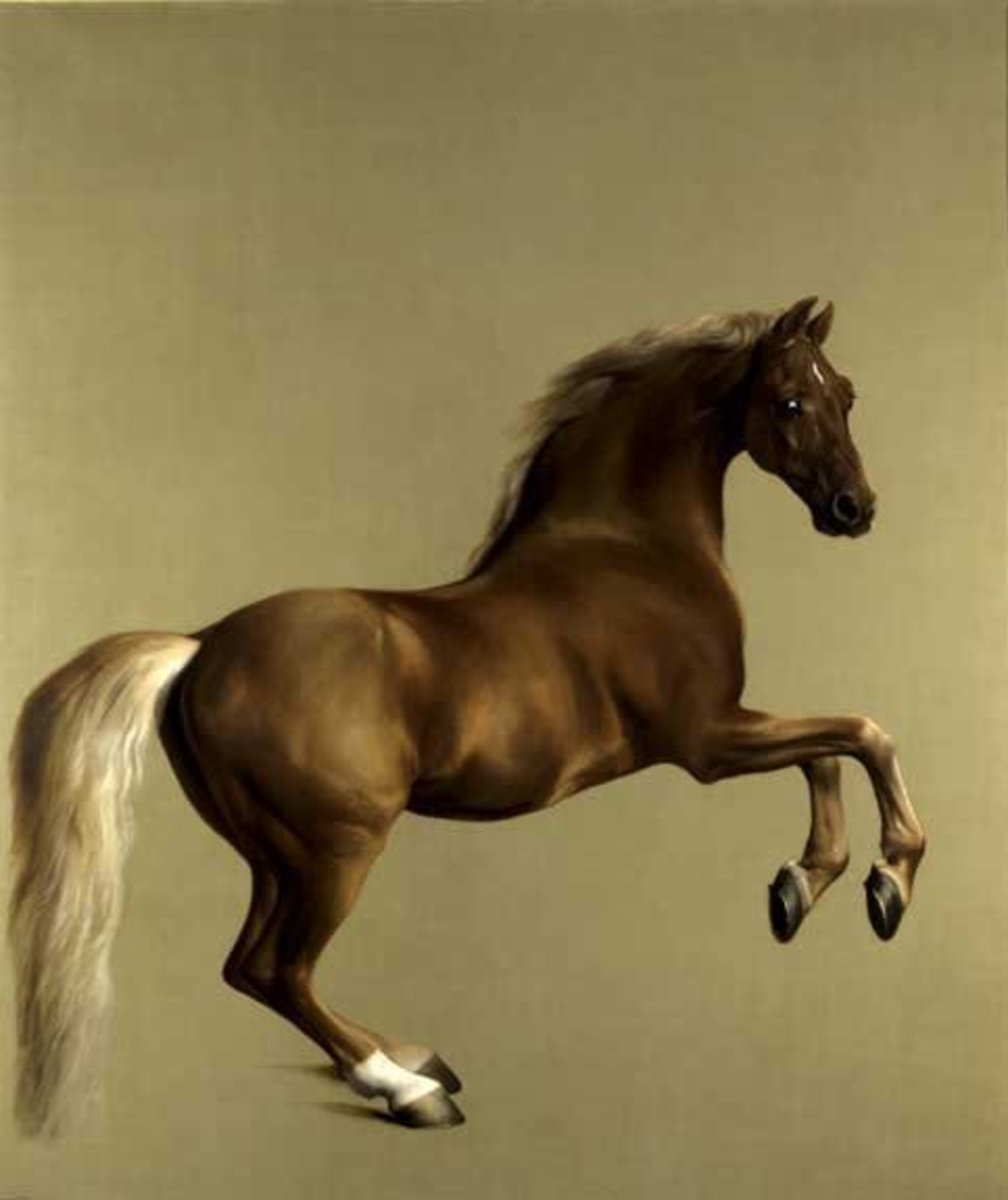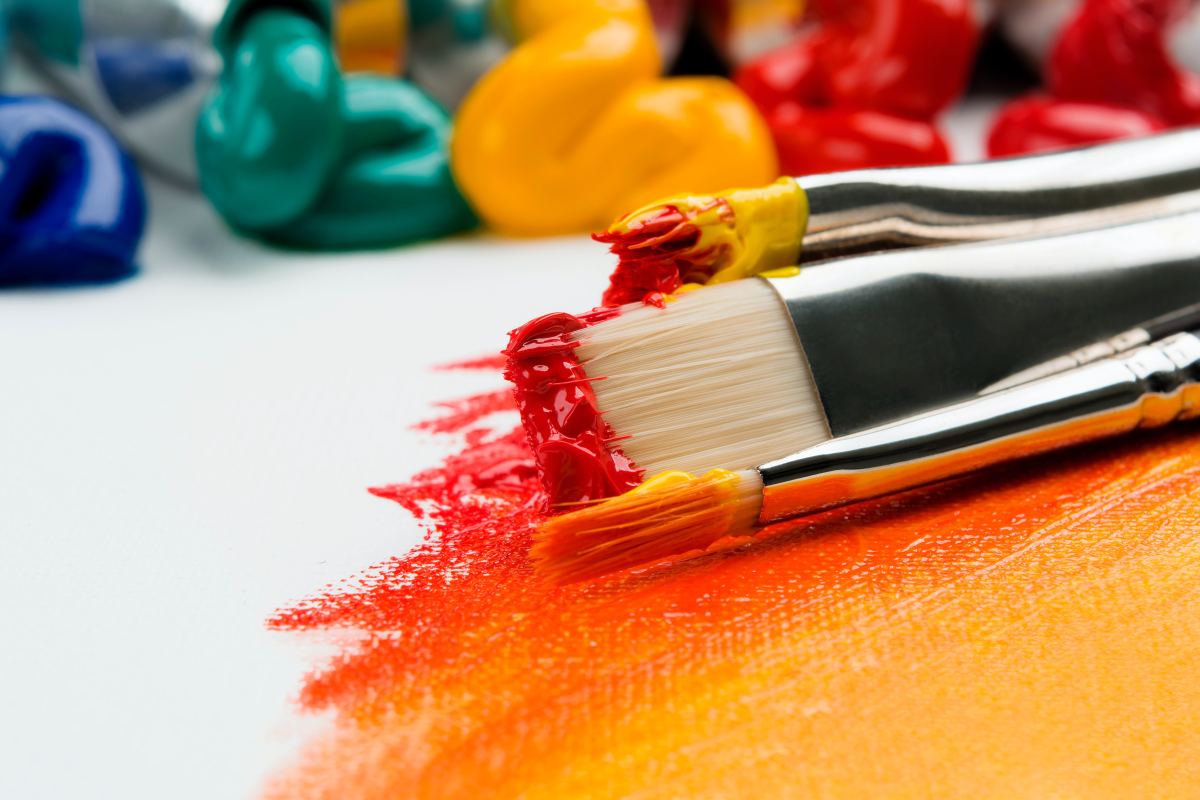A Turkish Painter in Paris - Fikret Mualla
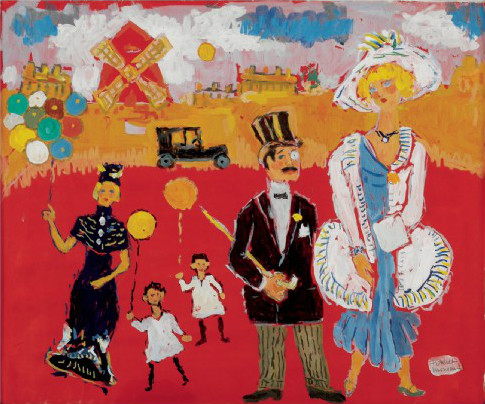
a Leading Painter
One of the leading Turkish artists of his day, Fikret Mualla spent much of his life in Paris. His paintings depict the everyday life of the French capital, and he signed them "Moualla". His Turkish roots can nevertheless be detected in his works.
Fikret Muala
lyrical and sincere work of art
Fikret Mualla (1903-1967)
A Turkish painter who produced enthusiastically lyrical and sincere works uniting the stylistic features of Expressionism and Fauvism.
Fikret Mualla was born in Istanbul and died in Nice, France on July 20, 1967. He was lame as the result of a childhood accident. That and his father's subsequent remarriage following the death of his mother contributed to his difficult and maladjusted character as a child. Following education at Saint Joseph, a school of French origin, he attended Galatasaray High School for a certain period, but was sent to Germany to study engineering even before graduating. He travelled around Germany, went to Switzerland and Italy and visited museums in those countries.
Once he realised his artistic ability, Mualla gained a sound knowledge of design within a short period of time. He made successful paintings, fashion drawings and engravings. His designs were accepted by the most famous German magazines. When his father began to experience financial difficulties and was unable to send him money any more, he stayed in Germany until the age of twenty-five, supported by an Egyptian prince.
Mualla was treated for alcohol problems in a hospital for a short period in 1929. Later on, he moved from Germany to France, living in artistic areas of Paris, such as Montparnasse and Saint Germain. He met Hale Asaf at the Andre Lhote studio.
After painting in Paris, Mualla returned to Turkey due to financial difficulties. In order to secure an income he applied to the Ministry of Education and was appointed as a painting teacher . However, he resigned from the post shortly afterwards. He designed costumes for operettas and illustrated the book of verse Varan 3 by Nazim Hikmet.
He prepared designs for the journal . For a year in 1936, he was placed into care at the Mental Hospital on the order of th public prosecutor due to some statements he had made, which were misinterpreted. He was discharged from the hospital towards the end of 1937. Following that experience, Fikret Mualla had an increasing phobia regarding the police that continued until his death.
Believing that he could survive in Paris with his share of a legacy from his father, he left Turkey in 1939. During the two years between his discharge from hospital and the time he left Turkey, he painted approximately 30 pictures of Istanbul for the 1939 International New York Fair Turkish pavilion at the request of Abidin Dino. A lawsuit was filed against him after he left Turkey, on the grounds that one of the designs he drew for Ses magazine published in 1938 was obscene, but he was acquitted in 1939.
Fikret Mualla lived in France for over 26 years. Due to long years of financial difficulties, excessive addiction to alcohol, and his continual police phobia, he experienced increasing instability. He was again hospitalized for treatment. Throughout this two-month stay in hospital he was under the protection of Dina Vierny, for whom he produced paintings.
With those he held his first exhibition in November 1954. He was hospitalized at a mental institution subsequent to his second exhibition. When he was discharged one month later, he made an agreement with an industrialist called Lharmin and moved to the 'Rive Droite' of the River Seine, where wealthier people lived.
During this period, he met Madame Angnes, who was a regular buyer of his paintings. Subsequently, Madame Angnes took Fikret Mualla under her protection and put him in a hospital when he had a stroke in 1962 and took care of him. Then, she settled him in her house located in the Reillane region of Nice and covered all his expenses. Mualla remained paralyzed until the end of his life. His nervous depressions started again in May 1967. He was first placed in a hospital and then in a care home where he would stay until his death. He was buried in a paupers' cemetery, just like the painter Hale Asaf. At the initiative of President of Turkey, his body was brought back to Turkey and buried in the Karacaahmet Cemetery in 1974, seven years after his death. In 1976 an exhibition was organized in Ankara in his name with 118 paintings donated by friends, relatives and various collections. Today most of his works are in private collections.
Having lived most of his life in France, Fikret Mualla selected his themes from among the details of Paris life, such as cafes, circuses and the streets. For him painting was a way of life. He sincerely translated the facts of life into colours and form and painted the members of the Bohemian circle in which he lived. He mostly used gouache technique and worked very fast with it. However, he was as professional and skilled with oils as he was with watercolour and gouache. Theoretical painting problems were not a particularly significant consideration for him. He was untouched by external influences and did not join in contemporary trends. He painted in the way he felt, subjectively and full of enthusiastic lyricism.
WORKS (main) : Painting: Oturan Adamlar (Sitting Men), 1937, Istanbul Museum of Paintings and Sculptures; People Making Love, 1952; Masada (At the Table),1953; Nature-Morte, 1954; Sokak (Street), 1955; Sermayeler (Working Girls), 1955; Kafe (Café), 1955, Bistro; Passenger Boats Waiting at the Canal; French Workers at a Café in Marseille; Haliç ve Süleymaniye (The Golden Horn and Süleymaniye Mosque); Paris'te bir Sokak (A Street in Paris); Amerikan Bar (American Bar); Baloncu (Balloon-Seller); Peysaj (Landscape); Fisherman; Mor Zeminde Figürler(Figures on Purple Background); Illustration: Nazim Hikmet, Varan 3, 1930. Theatre Costumes: Lüküs Hayat, Deli Dolu, Saz Caz.
Photo Gallery - Fikret Mualla Paintings
Click thumbnail to view full-size


Contemporary Turkish Painters
StickyNote
The Paris streets, shopping centres, markets and coffee-houses are brought to life in all their colour and variety in Fikret Mualla's canvases.
It was in the bars, where he would relax to the sound of saxophones and double basses, that Mualla could forget his mental stresses, his constant homesickn
Paris Bars and Bristos
“Paris Bars and Bistros” is one of the most important themes of Fikret Mualla. In these places that he cared about most, he could have the opportunity to reunite with alcohol which had a great importance in his life, by bartering his paintings to the acquaintance owners of these bars and bistros just for few drinks when he was broke, and these places formed the rudimentary social area of his usually reclusive life."
www.sanalmuze.org
Picasso met Fikret Mualla and liked his work.
Picasso knew Fikret Mualla and found his painting good, in order to support Fikret Mualla Picasso purchased on painting and gave on of his own as a gift to Mualla. But Fikret Mualla had to sell Picasso painting to cover his drinking bills.
Fikret Mualla From Virtual Museum
Turkish Virtual Museum is a relaible & good source for people who would like to learn about Turkish paintings and painters.
retrospective
- Fikret Mualla Retrospective - İstanbul Modern
İstanbul Modern - Fikret Mualla
Information about Fikret Mualla - Fikret Mualla Art
Fikret Mualla page
